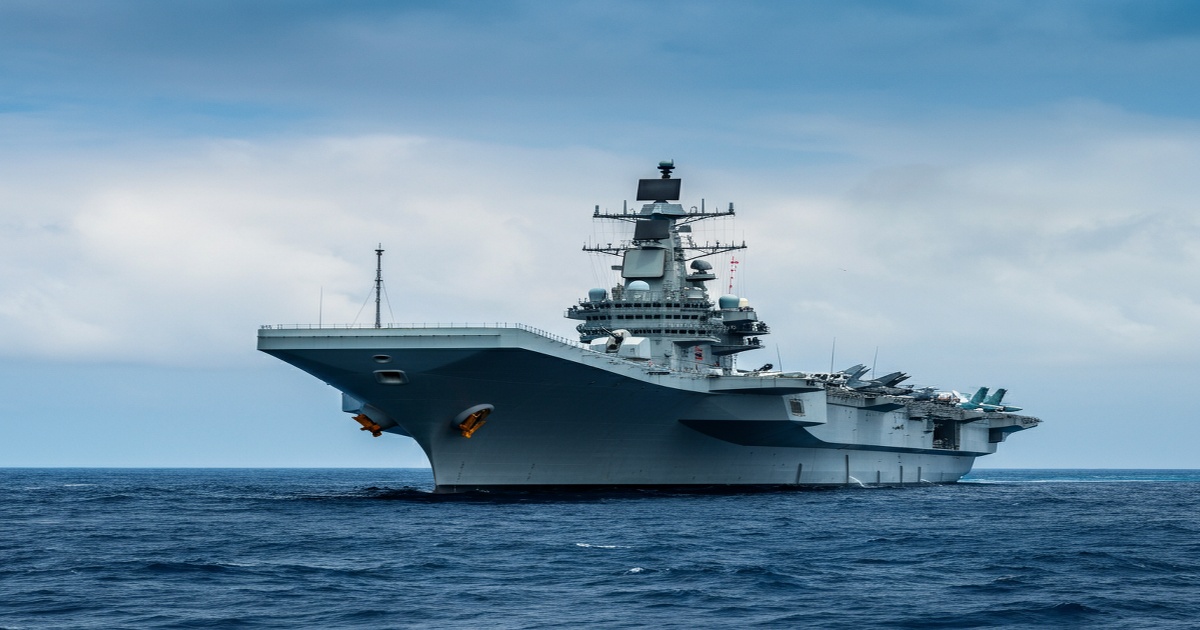The photograph depicts the Chinese aircraft carrier Liaoning (Hull 16) alongside other vessels and fighter jets during a maritime parade conducted by the Chinese People's Liberation Army (PLA) Navy in the South China Sea on April 12, 2018.
The PLA Navy's aircraft carrier Liaoning reportedly sailed into the Pacific Ocean east of the Philippines. A US media outlet suggested this marked the furthest distance the Chinese carrier has traveled in the Western Pacific during a deployment. A Chinese military affairs expert stated that the Liaoning's training is routine and such long-distance voyages are anticipated to become more frequent.
Following operations from May 25 to 26, several PLA Navy warships, including the Liaoning, continued their journey in the Pacific Ocean. The ships moved from approximately 340 kilometers south of Miyako Island to around 1,030 kilometers southeast of Miyako Island between May 27 and 29, according to a press release from Japan's Ministry of Defense Joint Staff.
The Japanese release also indicated that the Liaoning conducted roughly 260 aircraft takeoff and landing sorties from May 25 to 29. The PLA Navy carrier group then proceeded further south into the Pacific Ocean on May 30.
USNI News, the news website of the US Naval Institute, referenced a map attached to the Japanese release, which showed the locations of Chinese warships over several days. USNI News noted that the Liaoning's position on May 30 was east of the Philippines and west of Guam. USNI News claimed this marked one of the furthest points the Liaoning has reached on deployment from China, with previous deployments limited to the South China Sea and Philippine Sea.
Wang Yunfei, a Chinese military affairs expert, commented that the Liaoning is engaged in normal training activities. He noted that the vessel has previously operated in the Western Pacific, so even if this mission extends further than past voyages, it is not unusual. Wang also stated that aircraft carriers are designed for long-range operations and are not meant to stay near home ports. He added that Chinese aircraft carriers are expected to venture even deeper into blue water zones in the future.
Wang also suggested that if the Japanese data is accurate, which indicated the Liaoning hosted about 260 aircraft sorties over five days, this reflects a high level of training intensity and indicates that the carrier's air wing is fully combat-ready.
In response to an earlier release by the Japanese Defense Ministry claiming that the Liaoning had conducted aircraft takeoff and landing exercises in the East China Sea, Senior Colonel Zhang Xiaogang, a spokesperson at China's Ministry of National Defense, stated at a regular press conference on May 29 that the Liaoning aircraft carrier group's training activity in relevant waters was not directed at any specific country or target and complies with international law and international practices.







5 Comments
Coccinella
If this is the new normal, then we are in for a long period of geopolitical tension. Very worrying!
Raphael
This isn’t just about training; it’s about making other countries uneasy. China is flexing its muscles.
Michelangelo
International waters should be open for all. Countries will train wherever legal and appropriate.
Raphael
Routine training is essential for any military. It shows that China is prepared and professional!
Michelangelo
I appreciate the transparency in operations. They’re just doing their job, like any other country.